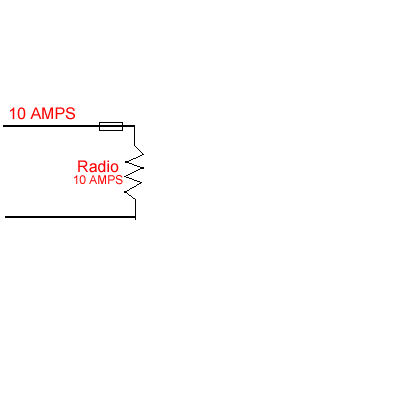Most homes have a supply of electrical energy supplied to them by wires called lines. Generators at the Power Stations maintain a voltage of 240 V across these lines. Electrical appliances are connected in parallel to the lines . As more and more appliances are connected, the current in the lines increases to a dangerous level. A situation of overload occurs where the current is so high that it creates a tremendous amount of heat. During a situation of overload, insulation material around the wire melts and increases the potential for fire.

A fuse is connected in series to the parallel circuit in the house. The electrical current passes through the fuse before it enters the circuit. A typical fuse box is shown on the left. When a dangerously high current is detected, the fuse breaks the circuit and stops all electrical current.
The animation below outlines how an overload situation occurs.
